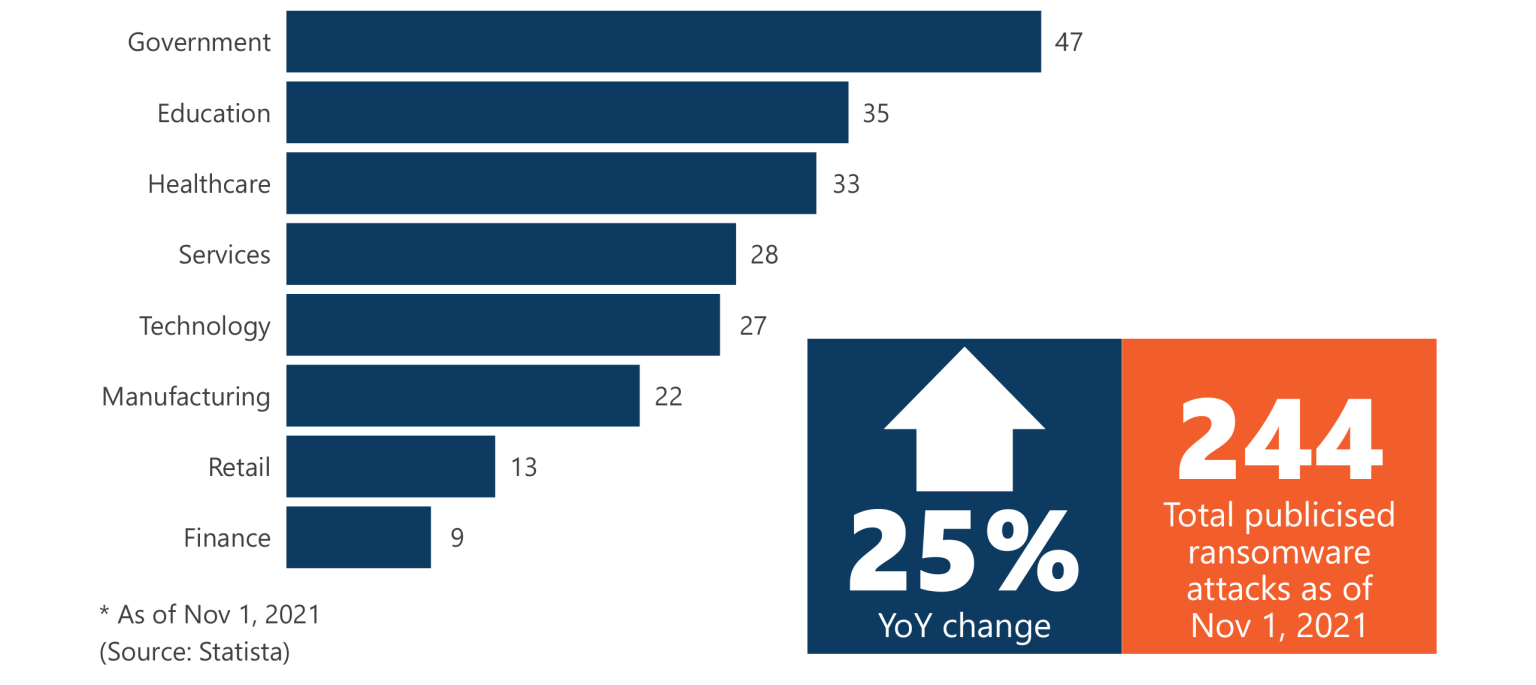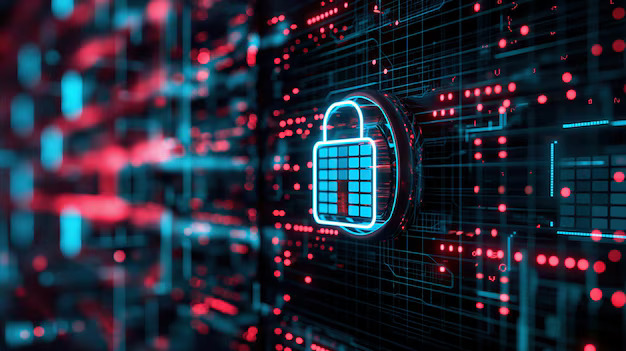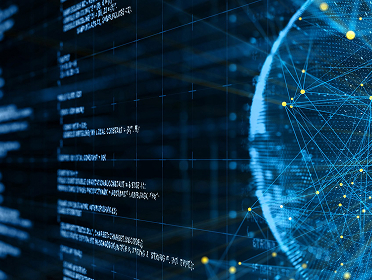In this age, where digital transformation is leading the way to enable businesses to realize their full potential, organizations are often under the notion that IT would lead the way in their business continuity efforts. Well, they need to think again!
Business leaders need to set a strategy that enables their organizations to remain competitive in an era where disruptions could come from anywhere. They CAN’T control disruptions arising from global pandemics, natural disasters, cyber-attacks, faulty equipment, or human actions; however, they CAN control how their business responds to such events.
Cybersecurity incidents are still one of the main disruptors to business operations worldwide, and ransomware is one of the fastest-growing threats in recent history, as per Statista.
The Industries Most Affected by Ransomware
Number of publicized ransomware attacks worldwide by sector in 2021

Since cyberattacks don’t seem to be slowing down any time soon, they should be one of the most critical threats to address when undertaking business continuity planning and disaster recovery strategy development. Below are some considerations.
1. Ensure that IT and cybersecurity functions are represented as part of the business continuity planning team It is critical that business continuity planning team.
It is critical that business continuity committees include IT and cybersecurity functions to help formulate strategies related to cybersecurity threats and risks, as those teams understand the current state of your organizational cybersecurity and associated risks.
Not all services have the same impact, and as we have centralized and optimized controls across the organization and applications, you may also end up with much larger failure domains impacting multiple services. This needs to be considered when assessing your IT services and platforms and deciding the right approach for continuity and recovery.
2. Business Impact Assessment (BIA)
Known cybersecurity threats and associated risks should factor into analysis ratings for typical components that support your services. This activity is crucial to identifying critical activities that support your organization services and products, as well as the impact associated with their interruption. Thus, determining the recovery time objective (RTO) and recovery points objective (RPO) is key.
RTO is defined as the timeframe that the business tolerates before the interruption starts to negatively impact the organization, whereas RPO is defined as how much data (in terms of time) you can afford to lose before affecting business operations.
The criticality and associated RTO/RPO will be factors that play a role in deciding your business continuity and disaster recovery strategies.
3. Business continuity strategy
How are you planning to continue your business operations lest some incident takes place? There are many strategies to consider, but here are some:
- Alternate/temporary business practices
- Prioritization of business processes
- Work from home strategies
- Mobile offices or alternate sites
4. Define your business continuity and DR plans
Business continuity plans focus on keeping the business operational during a disaster. It’s the high-level process that focuses on being able to continue offering the products and services with minimal disruption during or immediately after a disaster. This usually includes your scope, objectives, roles and responsibilities, BIA(Business Impact Assessment) results, disruption scenarios and response, resources requirements, communication plan, as well as plan testing requirements and maintenance.
On the other hand, disaster recovery is a formal document created by an organization that contains detailed instructions on restoring data access and IT infrastructure. The plan includes strategies for minimizing the effects of a disaster, so an organization will continue to operate and resume critical operations. This disaster recovery plan is based on your Business Impact Assessment results, and it answers questions such as the following:
- Will you have a hot disaster recovery site?
- Where will it be located? Will it be cloud-based? Self-hosted?
- Which backups will you maintain? Where will they be located?
Whether your plan is cloud, hybrid, or on-prem-based, it needs to be clear, detailed, and based on cybersecurity threats and risks. For example, the risk of encryption from ransomware may drive decisions for your organization to have some kind of cloud-hosted redundancy for specific critical data/systems that is quickly accessible and scalable for continuing business seamlessly.
5. Crisis Communications
Planning for cybersecurity crisis communication is slightly different than communications required from a business disruption by a power outage. A cyberattack attracts far more media attention, subjecting your organization to higher risks of reputational damage. A solid crisis communication strategy will help ensure the right amount of information is shared at the right time with the right people. Some of the elements to consider include:
- Designate an internal communications lead.
- Designate an external communications lead.
- Ensure the involvement of your legal counsel.
6. Test your plans and improve them
To achieve successful business continuity planning, it is essential to test those plans, record the results, and keep your plans up to date by periodically enlisting the help of functional business owners. Especially as we specifically focus on cyber incidents, the normal IT approach of just restoring a backup or failover to a DR may not be applicable as attackers may have been inside of your environment for weeks or even months.
Business continuity is a complex affair, and it is crucial to consider how cybersecurity threats and risks would impact your business continuity and disaster recovery efforts. With the cost of incidents rising, you simply cannot afford to ignore it.
That is why we are here to help you reap the benefit from our years of experience in helping customers document and plan their business continuity.







